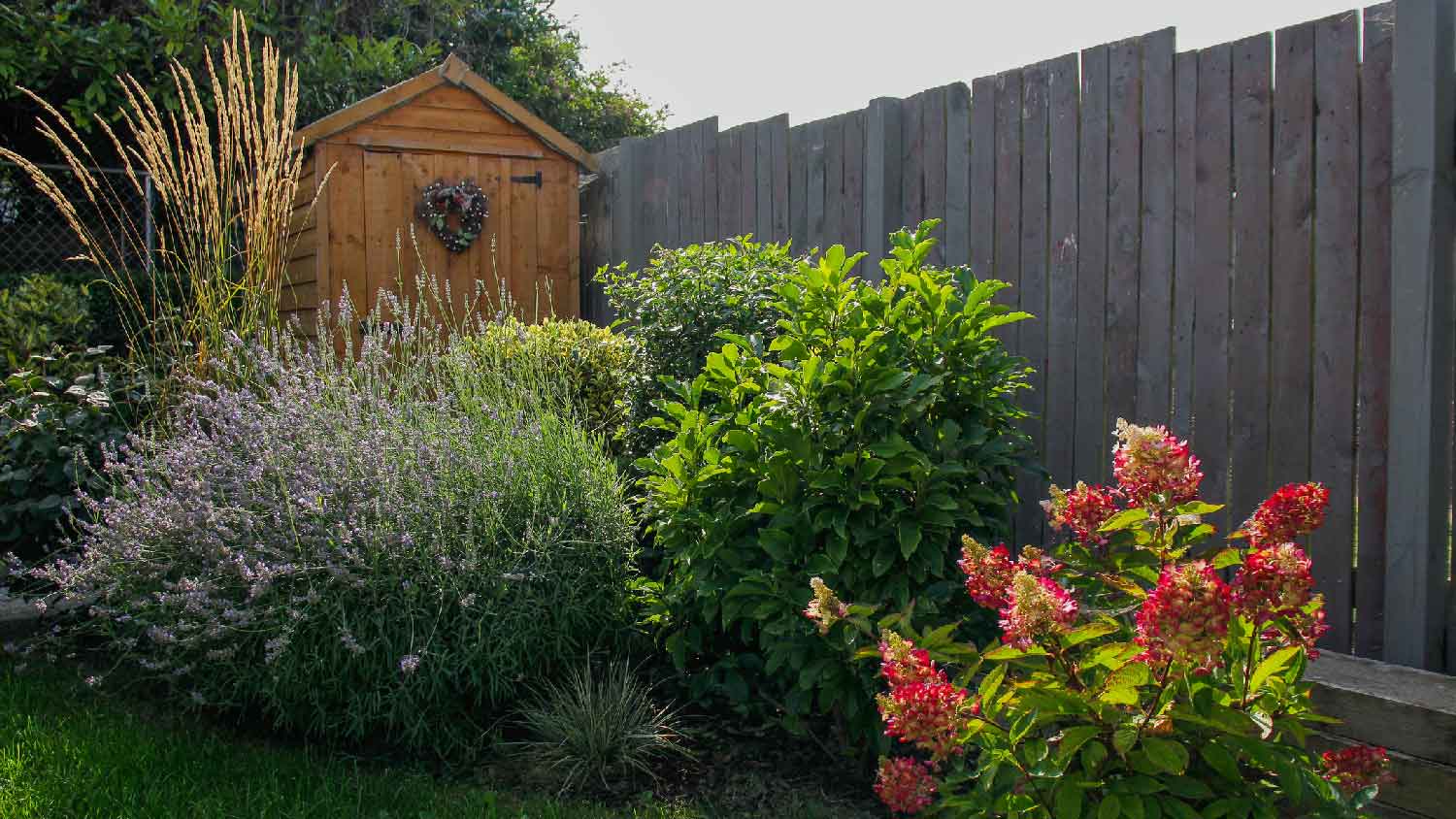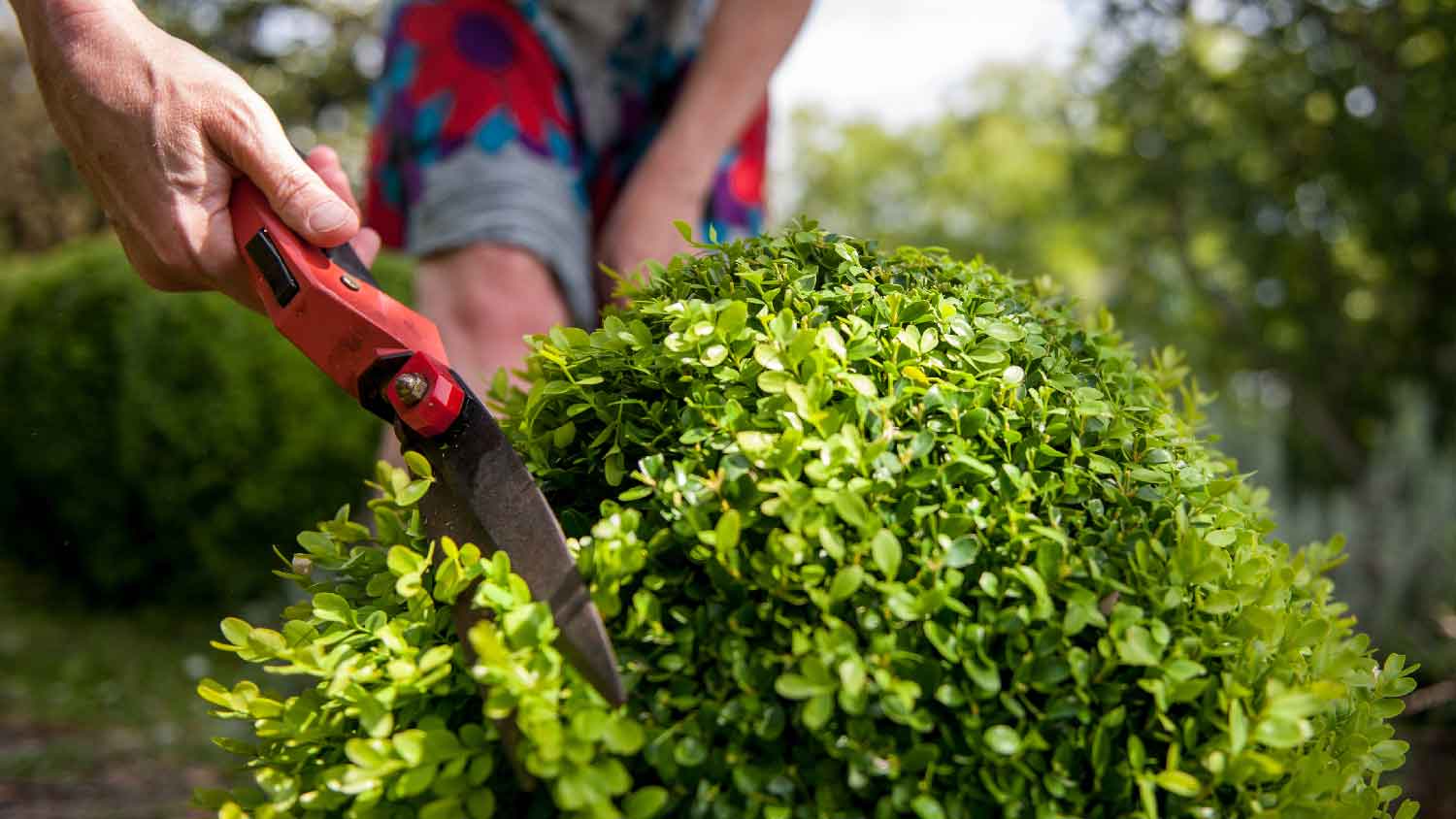
Ivy might look pretty, but you probably don’t want it in your garden. Learn how much it’ll cost to remove ivy by type, treatment method, and more.
Take landscaping to the next level with one (or both) of these picturesque plants


A bush is a general term for how a plant grows.
A shrub is a specific type of woody plant with distinct characteristics.
While shrubs and bushes share slight differences, both are solid landscaping options.
Luscious greenery is the hallmark of a stunning landscape. In addition to trees, shrubs and bushes are two common plants often used in landscaping ideas. But what exactly is the difference between the shrubs vs. bushes? Read on to compare shrub vs. bush, and find out which one is right for your landscaping needs.
Shrubs and bushes are often similar in appearance, making it quite difficult to distinguish them. In fact, the two terms are often used interchangeably to describe a woody plant with green leaves, many perennial stems, and less than 10 feet tall. But a closer examination of the history and usage of both terms reveals nuances that help distinguish them.
A bush is a more general term for the way a plant grows. In horticulture—the art and science of plants and garden cultivation—a bush is a descriptor for the shape of a plant. However, a shrub refers to a specific type of plant. The term shrub can describe a plant that’s smaller than a tree, stays above ground year-round, and has several stems.
Ultimately, the characteristics of a shrub and bush can overlap and vary depending on individual interpretation and location. If you need help deciding between shrub vs. bush for your landscaping project, hire a local landscaping expert to weigh in with their expert opinion. Plus, they can help plant and maintain whichever option you choose.

The general consensus is that a shrub is a low, woody plant with several perennial stems. Shrubs usually have a height of less than 10 feet and stems three inches or less in diameter. Though smaller than trees, some people refer to shrubs as miniature trees without trunks. Shrubs come in several types, so you’re bound to find the right fit for your landscaping needs. You’ll need to provide seasonal maintenance by pruning the shrubs to prevent it from becoming overgrown or unkempt.
| Pros | Cons |
|---|---|
| Visually appealing | Can look untidy if not properly maintained |
| May create a privacy barrier | Can become overgrown |
| Comes in several styles | May attract wildlife |
Best for:
Bringing texture and color to landscapes while also reducing noise and dust.
Providing shade and a measure of privacy.
Cost-conscious homeowners, as smaller shrubs can be quite cost-effective.
Visually appealing: Well-manicured shrubs can elevate any landscape’s look while adding rich texture and color.
Privacy: Shrubs can be as tall as 10 feet, which can give your yard more privacy.
Versatile: There are several types of shrubs, so you can choose the perfect look for your landscape.
Maintenance required: Shrubs can become untidy if they aren’t regularly pruned and maintained.
Difficult removal: Overgrown shrubs can become unmanageable and hard to remove from the foundations of your home.
Wildlife: Insects and animals may be drawn to your shrubs as the foliage can be a source of food.

A bush is a general term that describes how a plant grows and its shape. Bushes are usually low, densely branched, round, and have several stems. Simply put, the term “bush” is a broad description of a woody plant while the term “shrub” refers more specifically to a plant classification.
| Pros | Cons |
|---|---|
| Eco-friendly | May attract wildlife |
| Visually appealing | Can become overgrown |
| Easy to maintain | May only provide a measure of privacy |
Best for:
An eco-friendly yet aesthetically pleasing landscape.
Homeowners who want a measure of privacy but not a completely enclosed yard.
Sustainable: Bushes support the ecosystem by providing wildlife with food and shelter, while also protecting the soil and purifying the air.
Visually appealing: Lush foliage adds color and texture, making your yard vibrant and inviting.
Easy to maintain: Bushes don’t necessarily need to be perfectly manicured. They can be left untamed for a rustic look and feel, or you can trim bushes for a streamlined aesthetic.
Wildlife: Bushes attract animals and insects since they offer food and shelter.
Fast growth: Bushes are often left to grow and don’t need much maintenance. However, they are prone to fast growth, which can result in an untidy appearance.
Limited privacy: Tall bushes can provide some privacy, but it can be limited compared to hedges, trees, or fences.

| Shrubs | Bushes |
|---|---|
| Scientific classification of a plant | General descriptor for how a plant grows |
| Low with several perennial stems | Low and densely branched |
| Less than 10 feet in height and 3 inches in diameter | Round in shape with several stems |
While both bushes and shrubs are quite durable and can survive without constant upkeep, shrubs will likely need more pruning to keep them looking tidy. Unless you’re after a perfectly manicured look, bushes can be left wild, while shrubs are often well-cultivated and trimmed more frequently.
While it’ll ultimately depend on your personal taste, shrubs come in an endless variety of colors, sizes, shapes, styles, and foliage. This wide array of options makes it possible to choose a gorgeous look for your landscape that fits your unique taste.
Both shrubs and bushes have a lifespan of around 10 to 15 years, making them a long-lasting choice for your landscape. Although these woody plants may be able to last even longer than that, your bush or shrub probably won’t look as luscious and healthy after the first decade or so. For maximum lifespan, provide your plants with seasonal maintenance, including pruning and trimming.
From average costs to expert advice, get all the answers you need to get your job done.

Ivy might look pretty, but you probably don’t want it in your garden. Learn how much it’ll cost to remove ivy by type, treatment method, and more.

How much does hardscaping cost project by project? Check out our breakdown for every price tag you need to know, from outdoor fireplaces to patios.

Leveling your yard can help with drainage and prevent damage to your home. Learn the cost to level a yard in Columbus, OH, and what factors can affect the price.

There are reasons to grade or slope your yard beyond aesthetics—drainage is the main one. Read on and learn how to have an informed discussion with your pro.

Discover the top six most effective tips and tricks of how to get rid of stickers in your yard and keep them from coming back.

Wondering how to clean dog urine off artificial grass? Revitalize your turf (even if it's pet-friendly) with this simple seven-step cleaning guide.